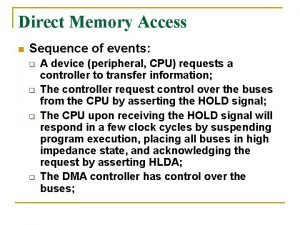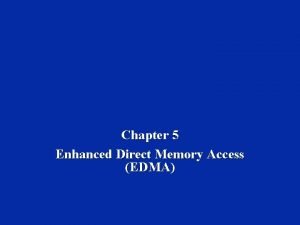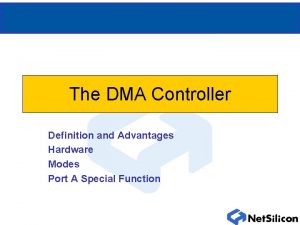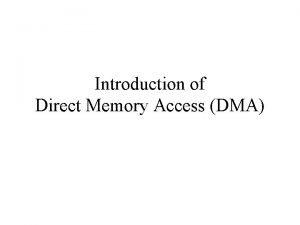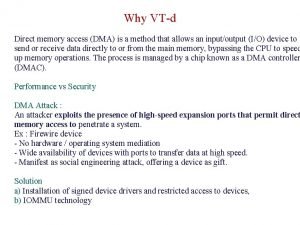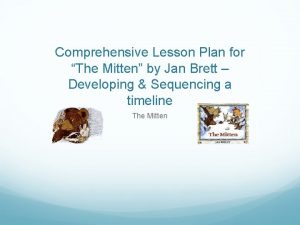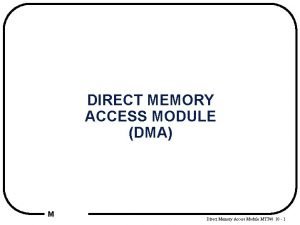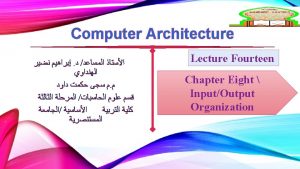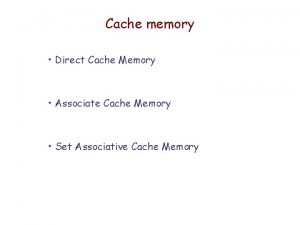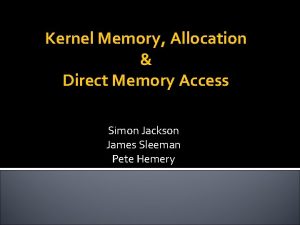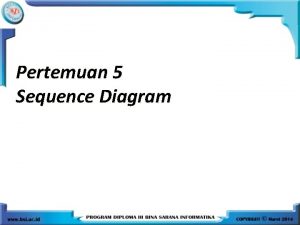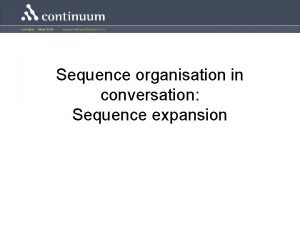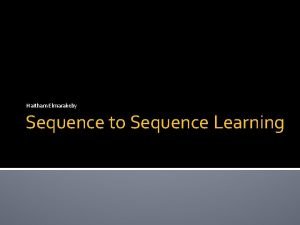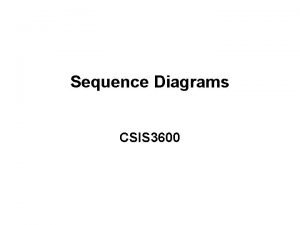Direct Memory Access n Sequence of events q














- Slides: 14

Direct Memory Access n Sequence of events: q q A device (peripheral, CPU) requests a controller to transfer information; The controller request control over the buses from the CPU by asserting the HOLD signal; The CPU upon receiving the HOLD signal will respond in a few clock cycles by suspending program execution, placing all buses in high impedance state, and acknowledging the request by asserting HLDA; The DMA controller has control over the buses;

Direct Memory Access q The DMA controller performs data transfers; n n n q q DMA read – transfer from memory to I/O device; DMA write - transfer from I/O device to memory; Memory to memory transfers; When transfers are completed the DMA controller returns control of the buses to the CPU by removing the HOLD signal; The CPU gains control over the buses and it removes the HLDA signal.

8237 – DMA Controller n Features: q q q Four Independent Maskable Channels with Autoinitialization Capability; Cascadable to any Number of Channels High Speed Data Transfers: n n q Up to 4 MBytes/sec with 8 MHz Clock Up to 6. 25 MBytes/sec with 12. 5 MHz Clock Memory-to-Memory Transfers

8237 – DMA Controller q Static CMOS Design Permits Low Power Operation n n q q ICCSB = 10 m. A Maximum ICCOP = 2 m. A/MHz Maximum Fully TTL/CMOS Compatible Internal Registers may be Read from Software

8237 – Block Diagram

8237 – Pin Definitions n n n CLK: Clock input. CS’: Enable for 8237 programming. RESET: Clears the command, status, request, temporary registers and first/last flip-flop. Sets the mask register. READY: Logic 0 on READY causes the 8237 to enter wait states for slow memory or I/O device operation. HLDA: Signal the 8237 that the CPU has relinquished the bus.

8237 – Pin Definitions n n n n DREQ 0 -DREQ 3: DMA request inputs. DB 0 -DB 7: Data bus. IOR’: I/O read. IOW’: I/O write. EOP’: End of process. A 0 -A 3: Address lines used to select the internal registers. HRQ: Hold request. DACK 0 -DACK 3: DMA channel acknowledge.

8237 – Pin Definitions n n AEN: Address enable. ADSTB: Address strobe. MEMR’: Memory read. MEMW’: Memory write.

8237 – Internal registers n The 8237 has several register to be used in its operation. They are listed below. q q q q q Current address register - CAR; Current word count register - CWCR; Base address register - BA; Base word count register - BWC; Command register – CR; Mode register – MR; Bus request register – BR; Mask register set/reset – MRSR; Mask register – MSR; Status register – SR.

8237 – Software Commands

8237 – Programming n Programming q q q The 82 C 37 A will accept programming from the host processor anytime that HLDA is inactive, and at least one rising clock edge has occurred after HLDA went low. It is the responsibility of the host to assure that programming and HLDA are mutually exclusive. Disable the controller (setting bit 2 in the Command register) or masking the channel before programming any of its registers. Once the programming is complete, the controller can be enabled/unmasked. After power-up it is suggested that all internal locations be loaded with some known value, even if some channels are unused. This will aid in debugging.

8237 – Programming

8237 – Programming

8237 – Programming
 8237 block diagram
8237 block diagram Edma memory
Edma memory Benefits of dma
Benefits of dma Direct access memory
Direct access memory Direct memory access in os
Direct memory access in os Mutually exclusive events vs not mutually exclusive events
Mutually exclusive events vs not mutually exclusive events How many circle
How many circle Medias.res
Medias.res Sequence of events at the neuromuscular junction
Sequence of events at the neuromuscular junction The arrangements of events in a story
The arrangements of events in a story The mitten sequence of events
The mitten sequence of events Luke goes to bat comprehension questions
Luke goes to bat comprehension questions Logo cern
Logo cern The earth dragon awakes sequence of events
The earth dragon awakes sequence of events Prototype in semantics
Prototype in semantics
